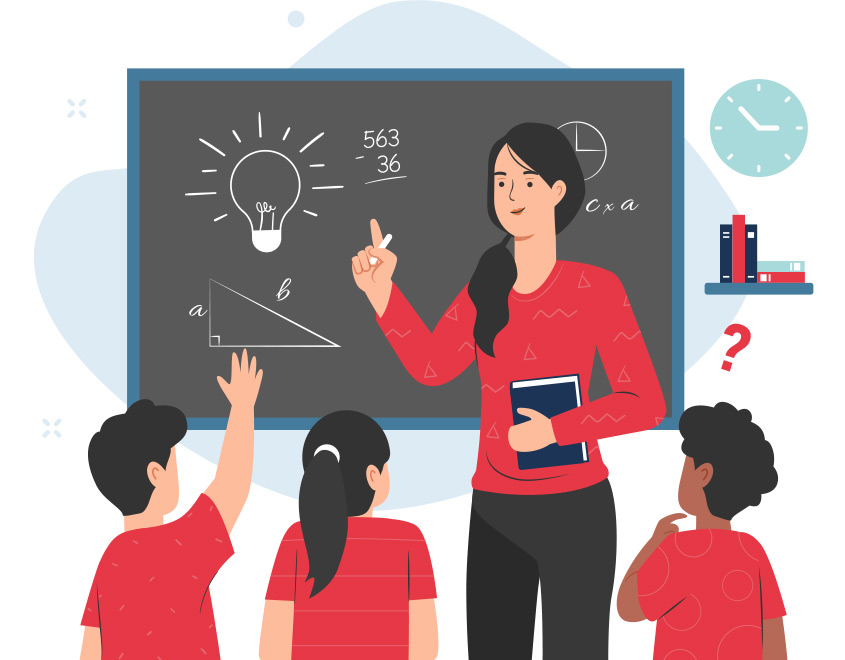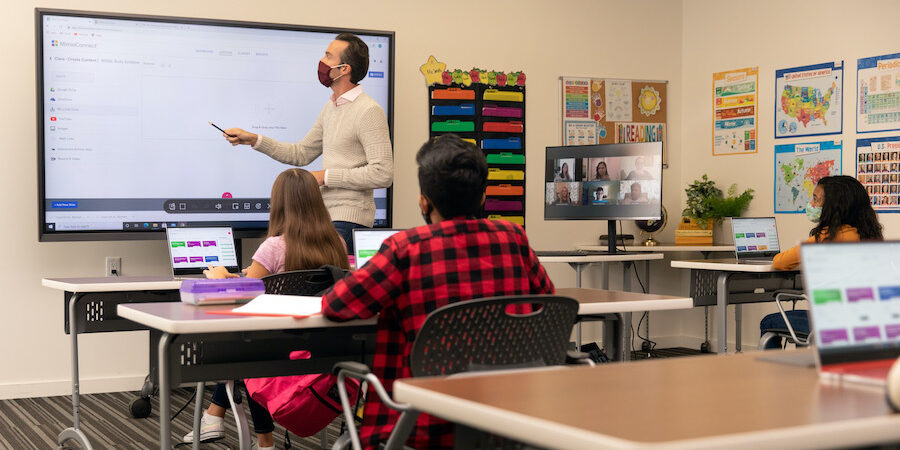Affordable Primary Science Tuition Singapore for All Learning Needs
Affordable Primary Science Tuition Singapore for All Learning Needs
Blog Article
Checking Out the Various Teaching Approaches in Key Scientific Research Education Today
The landscape of main scientific research education and learning is evolving, with different training strategies acquiring importance in contemporary class. Inquiry-based knowing, hands-on experiments, and the combination of modern technology are redefining how educators engage young minds. Additionally, joint methods and set apart instruction are being utilized to provide to the varied requirements of pupils, improving both involvement and understanding. As we analyze these methodologies, concerns emerge concerning their performance and the implications for future academic techniques. What might these changes in technique mean for the future generation of students?
Inquiry-Based Learning
Inquiry-Based Understanding (IBL) is an instructional method that encourages students to discover clinical ideas through wondering about, investigation, and hands-on trial and error. This method highlights the role of students as active participants in their discovering, advertising important reasoning and analytic skills. By engaging with real-world questions, students end up being motivated and interested, which enhances their understanding of scientific concepts.
In IBL, instructors function as facilitators, leading pupils as they navigate their questions as opposed to supplying information straight. This student-centered technique enables for differentiation, suiting different discovering designs and paces. Pupils establish skills in formulating hypotheses, developing experiments, and analyzing data, which are vital for clinical literacy.
Additionally, IBL fosters collaboration amongst pupils, motivating them to share findings and ideas. This collective questions advertises social abilities and a feeling of neighborhood within the classroom. Moreover, the procedure of inquiry urges resilience, as pupils learn to accept failing as a tipping stone toward understanding.
Hands-On Experiments
Hands-on experiments are an important part of reliable science education, complementing the principles of inquiry-based learning. These experiments allow pupils to involve straight with clinical ideas, promoting a much deeper understanding through experiential discovering. By controling products and observing results, young learners can grasp abstract concepts in concrete ways.
Such tasks advertise critical reasoning and analytic skills, as students assume results, conduct experiments, and examine results. This process motivates them to ask questions, refine their understanding, and create a scientific mindset. Furthermore, hands-on experiments can be customized to varied learning styles, ensuring that all students have the opportunity to engage meaningfully with the web content.
Furthermore, hands-on experiments often urge cooperation among peers, advertising synergy and communication skills. Operating in groups allows students to share concepts, go over findings, and gain from each other, which boosts their total educational experience.
Integrating hands-on experiments right into the main science educational program not just improves the learning setting yet additionally grows a long-lasting passion in science. By actively getting involved in their education and learning, pupils are more probable to develop an interest for clinical questions that expands past the classroom.

Innovation Integration
Integrating technology into primary scientific research education and learning has ended up being significantly vital in cultivating pupil engagement and enhancing discovering outcomes. Using electronic tools, such as interactive simulations, online labs, and instructional software program, supplies trainees with chances to discover scientific ideas in innovative methods. These resources promote a much deeper understanding of intricate topics by enabling students to envision and control variables that he said would be unwise in a standard classroom setup.
Moreover, innovation combination motivates individualized finding out experiences. Trainees can proceed at their very own pace, revisiting challenging concepts via multimedia sources, which satisfy various knowing designs. This adaptability not only sustains private growth however additionally cultivates a feeling of freedom in students.
In addition, innovation acts as a bridge to real-world science, connecting pupils with current research study and expert payments. Access to on-line databases and clinical journals widens trainees' viewpoints on clinical inquiry and cultivates critical assuming abilities.
Collaborative Knowing
Joint learning plays an important duty in primary science education and learning by fostering team effort and communication abilities amongst trainees. This technique motivates learners to collaborate, share understanding, and involve in analytic, which boosts their understanding of scientific ideas. By joining team tasks, students discover to articulate their ideas, listen to diverse perspectives, and negotiate solutions, all of which are necessary abilities in both academic and real-world contexts.

Study suggests that collective discovering can result in raised motivation and involvement in scientific research topics, as pupils find pleasure in shared experiences (primary science tuition Singapore). Additionally, this method prepares students for future collective undertakings, equipping them with the skills required for reliable team effort in college and professional atmospheres. Inevitably, welcoming joint learning in primary scientific research education and learning can dramatically improve the discovering experience and advertise a much deeper understanding of scientific query
Separated Direction

Set apart guideline can materialize in numerous means, such as varying the web content, processes, or products of discovering. For instance, instructors may make use of tiered projects that supply varying levels of complexity, allowing pupils to work at their particular readiness levels. Additionally, flexible organizing techniques can assist in partnership amongst trainees with various capabilities, fostering peer knowing.
Analysis plays an important function in this approach, as it informs instruction and aids educators understand each pupil's distinct needs. Formative assessments, such as monitorings and tests, can lead teachers in changing their strategies to boost finding out end results. primary science tuition Singapore. Ultimately, by applying differentiated instruction in primary science education, index instructors can cultivate an extra effective and fair knowing setting, equipping all pupils to reach their here are the findings full capacity in recognizing clinical sensations
Conclusion
In recap, the diverse training approaches in main science education, consisting of inquiry-based learning, hands-on experiments, innovation integration, collective learning, and distinguished guideline, collectively contribute to a more efficient learning setting. These approaches advertise crucial reasoning, analytic abilities, and a deeper understanding of scientific concepts. By carrying out these strategies, instructors can produce interesting and helpful classrooms that resolve the different demands of students, eventually cultivating a lifelong rate of interest in science and improving academic success.
Inquiry-Based Understanding (IBL) is a pedagogical strategy that motivates students to explore clinical principles with wondering about, examination, and hands-on experimentation.Collective discovering plays an essential function in primary scientific research education by fostering team effort and interaction skills among trainees.Study suggests that collective understanding can lead to increased inspiration and involvement in science subjects, as trainees discover enjoyment in common experiences.In cultivating an inclusive understanding setting, separated direction arises as a vital approach to accommodate the varied needs and capabilities of trainees in main scientific research education. Inevitably, by executing separated direction in primary science education and learning, teachers can cultivate an extra effective and equitable knowing setting, empowering all trainees to reach their complete potential in recognizing clinical sensations.
Report this page